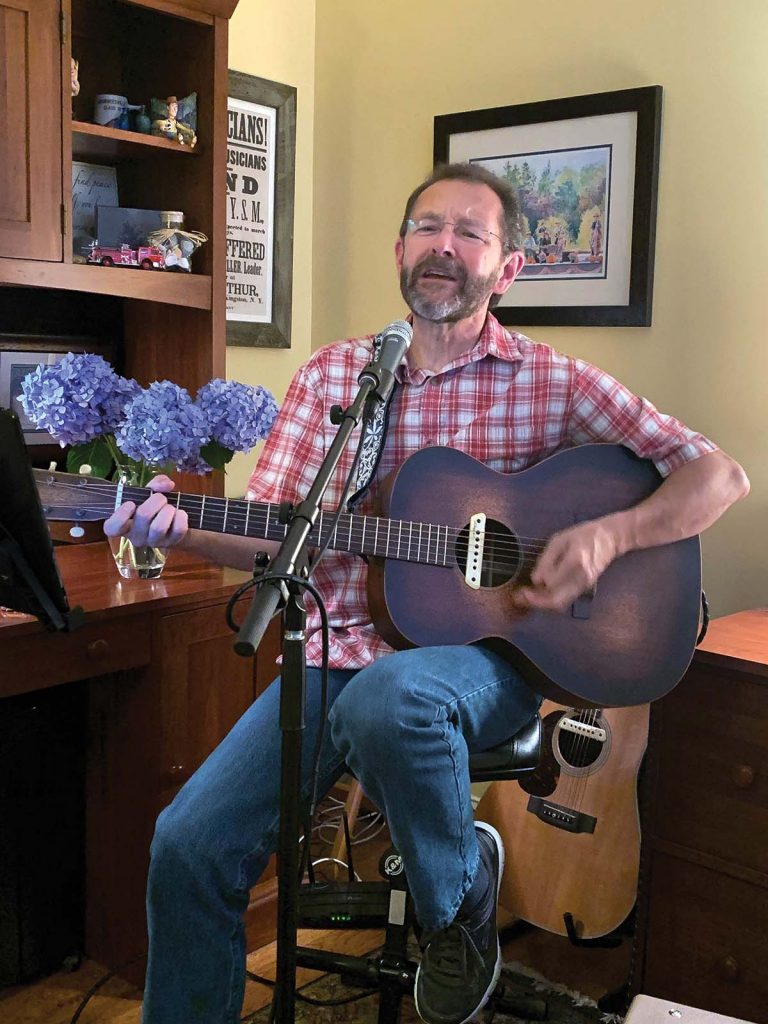
The Book Exchange in Flat Rock, NC
In just about every town of any size in Victorian America, there was a Ladies Aid Society — a group of well educated women committed to doing good works. While most of those societies went the way of the steam locomotive after World War II, a few survived, including the Ladies Aid Society of Flat Rock. Ninety members strong, the Ladies Aid Society — the force behind The Book Exchange in Flat Rock — is open to anyone who’s interested (well any woman, at least). And while Book Exchange manager Jinny Bell admits that the membership is graying, they welcome younger women to take up the mantle and keep the tradition of giving back to the community alive.
Few regional organizations of any kind have a history as lengthy as that of the Ladies Aid Society. Founded in 1880 by wealthy Charleston matrons who summered in the area, the Society was once associated with St. John-in-the-Wilderness church and provided material assistance to the locals who cared for the summer homes over the winter. A member of the club who is now in her 90s recently told Eleanor Flowers, Ladies Aid Society President, that as a child, she accompanied her grandmother (also a Society member) in a horse cart as they visited homes on Pinnacle Mountain to bring food and firewood to residents there. That practice continued well into the 1950s. Through the years there were ladies’ teas and holiday baazars to raise funds, but in 1980, the Book Exchange was introduced as a steady enterprise for the group. In 2004, the Society dissolved its connection to St. John-in-the-Wilderness as over half of the membership had no association with church. The group gave up its other charitable works (providing a supply of medical equipment such as wheelchairs, crutches, and hospital beds) to focus solely on the Book Exchange, housed in the former Flat Rock Post Office, built in 1847.
Staffed entirely by volunteers, the Book Exchange receives enough donations to keep the shelves and even the back storage room stocked. With the many retirees in the area, Bell says that the Exchange will often get a donation of every book in an elderly person’s home, donated by his or her children. “You never know what’s going to come in,” says member Linda Chesnut. From time to time, the ladies will receive a book with significant value: a set of Alice in Wonderland books signed by the illustrator fetched $1,500 from a rare book dealer some years back, Bell reports. The majority of the Exchange’s stock consists of hardcovers and paperbacks in a range of genres from mystery to popular fiction and a small children’s section.
Prices are dependent on the book’s publication date, but during the summer, no paperbacks are more than $3 dollars. With the many romance novels that come in, they’re often priced at $3 for a whole paper sack full. Current magazines (some just a few weeks old) can be had for 50 cents apiece. The only brand new stock in the store are the greeting cards and the “card houses” made until recently by a 91-year-old member from greeting cards laced together to create birdhouse-like structures that have been popular gift wrapping in the area for years.
Summer is the store’s busiest time of year, with vacationers staying at Bonclarken or other nearby retreat centers stopping in for some reading material and locals coming in on the way out of town for something to read on the plane.
In 2012, the Ladies Aid Society was able to provide $16,000 to local charities, including the Boys and Girls Club of Henderson County, The Children and Family Resource Center’s Adolescent Parenting Program and the Hendersonville Rescue Mission. While many of the charities are related to women and family issues, they’re not limited to those areas, says member Judy McKnight. The group accepts applications from community groups and mutually decides on recipients and amounts. Priority is given to organizations that don’t receive support from government grants or other large donors. “We choose programs that are very near and dear to our hearts,” says McKnight. “Giving back is what this is all about.”


